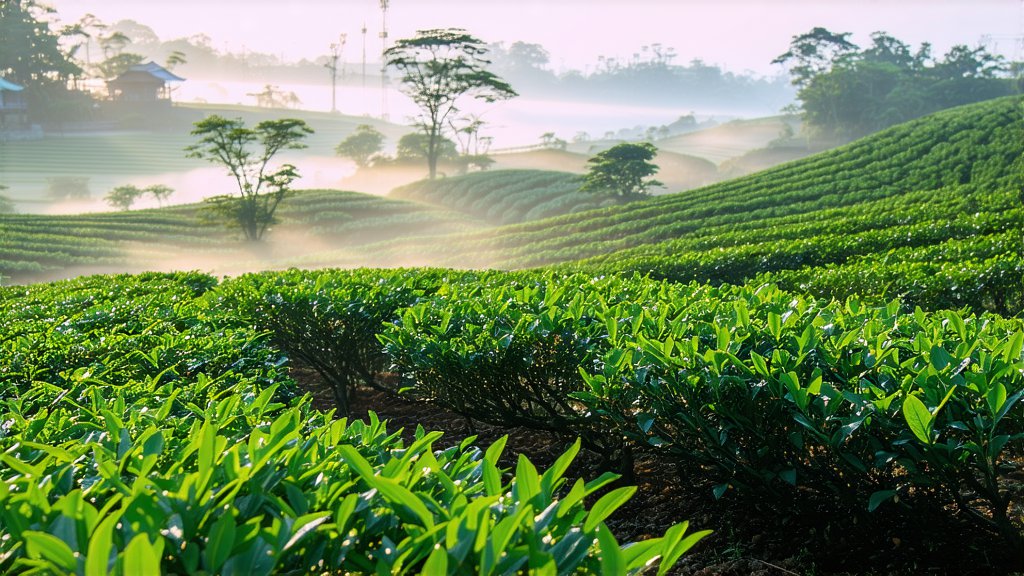
In the vast and diverse landscape of Chinese tea, few varieties captivate the senses and tell a story as profoundly as Junshan Yinzhen, a revered yellow tea that hails from the misty mountains of Hunan province. This golden elixir, often shrouded in mystery for international tea enthusiasts, is not merely a beverage but an experience steeped in history, tradition, and unparalleled craftsmanship.
A Glimpse into History
The origins of Junshan Yinzhen trace back to ancient times when tea was first discovered as a medicinal herb. Legend has it that during the Tang Dynasty (618-907 AD), a wise monk by the name of Weizheng stumbled upon this unique tea while meditating in the Junshan region. He found the leaves to possess extraordinary healing properties and shared his discovery with the local villagers, who then began cultivating and processing it using traditional methods passed down through generations.
Junshan Yinzhen gained prominence during the Ming Dynasty (1368-1644 AD) when it became a cherished tribute tea offered only to the imperial court. Its production was strictly controlled, ensuring its exclusivity and prestige. Today, this legacy continues, with Junshan Yinzhen being one of the rarest and most sought-after teas in China.
Varieties and Classification
Junshan Yinzhen falls under the category of 'Huang Cha,' or yellow tea, which is relatively unknown outside Asia compared to its more famous counterparts, green and black tea. What sets yellow tea apart is its distinctive processing method that involves a delicate balance of withering, steaming, wrapping, and final drying stages. This process gives Junshan Yinzhen its characteristic golden color and mellow flavor profile.
There are two primary types of Junshan Yinzhen: Junshan Mianzhuan and Junshan Yinzhen Yajian. The former consists of whole leaves and buds, known for their robust flavor and aroma, while the latter includes only the tender tips, offering a more refined and subtle taste experience.
The Art of Craftsmanship
The making of Junshan Yinzhen is an art form that requires precision, patience, and a deep understanding of nature’s rhythms. Here’s an overview of the intricate process:
-
Withering: Freshly picked tea leaves undergo a gentle withering process under the sun or in shaded areas, allowing them to lose moisture slowly while preserving their natural essence.
-
Fixation: Unlike other teas, Junshan Yinzhen is not pan-fired but rather wrapped in bamboo mats and left to steam lightly for a short period. This step halts oxidation without fully stopping it, giving the tea its unique yellow hue.
-
Wrapping: The partially fixed leaves are then tightly wrapped in cloth or paper and left to rest for several hours. During this time, residual heat from fixation continues the oxidation process subtly, enhancing the tea's complexity.
-
Drying: Finally, the tea is dried gently over low heat to remove any remaining moisture, ensuring stability and longevity without compromising on flavor or aroma.
A Symphony of Sensory Delights
To truly appreciate Junshan Yinzhen, one must engage in a mindful tasting ritual. Begin by observing the dry leaves—delicate and needle-like, resembling silver threads interwoven with hints of green and yellow. As hot water (around 80°C) cascades over them, watch the leaves unfurl gracefully, releasing a fragrant bouquet that evokes fresh hay, chestnuts, and a whisper of floral notes.
Take a moment to inhale deeply before taking your first sip. The initial taste is smooth and velvety, with a sweet aftertaste that lingers on the palate. Subsequent infusions reveal deeper layers of flavor, from a subtle fruitiness to earthy undertones, each revealing a new facet of this golden treasure.
Pairing Perfection
Junshan Yinzhen pairs beautifully with light snacks such as almond cookies, fresh fruit, or delicate pastries, enhancing both the tea and the food without overpowering either. For a more adventurous pairing, try it alongside dim sum or sushi, where its cleansing properties can refresh the palate between bites.
Conclusion
Junshan Yinzhen stands as a testament to China's rich tea heritage, embodying centuries of wisdom and dedication to the craft. It invites us not just to drink but to savor, ponder, and connect with nature's bounty. As you embark on your journey exploring this hidden gem of yellow tea, remember that every cup tells a story—one of historical significance, cultural depth, and personal reflection. So, sit back, relax, and let Junshan Yinzhen transport you to the misty mountains of Hunan, where time slows down, and every sip is a moment of pure bliss.